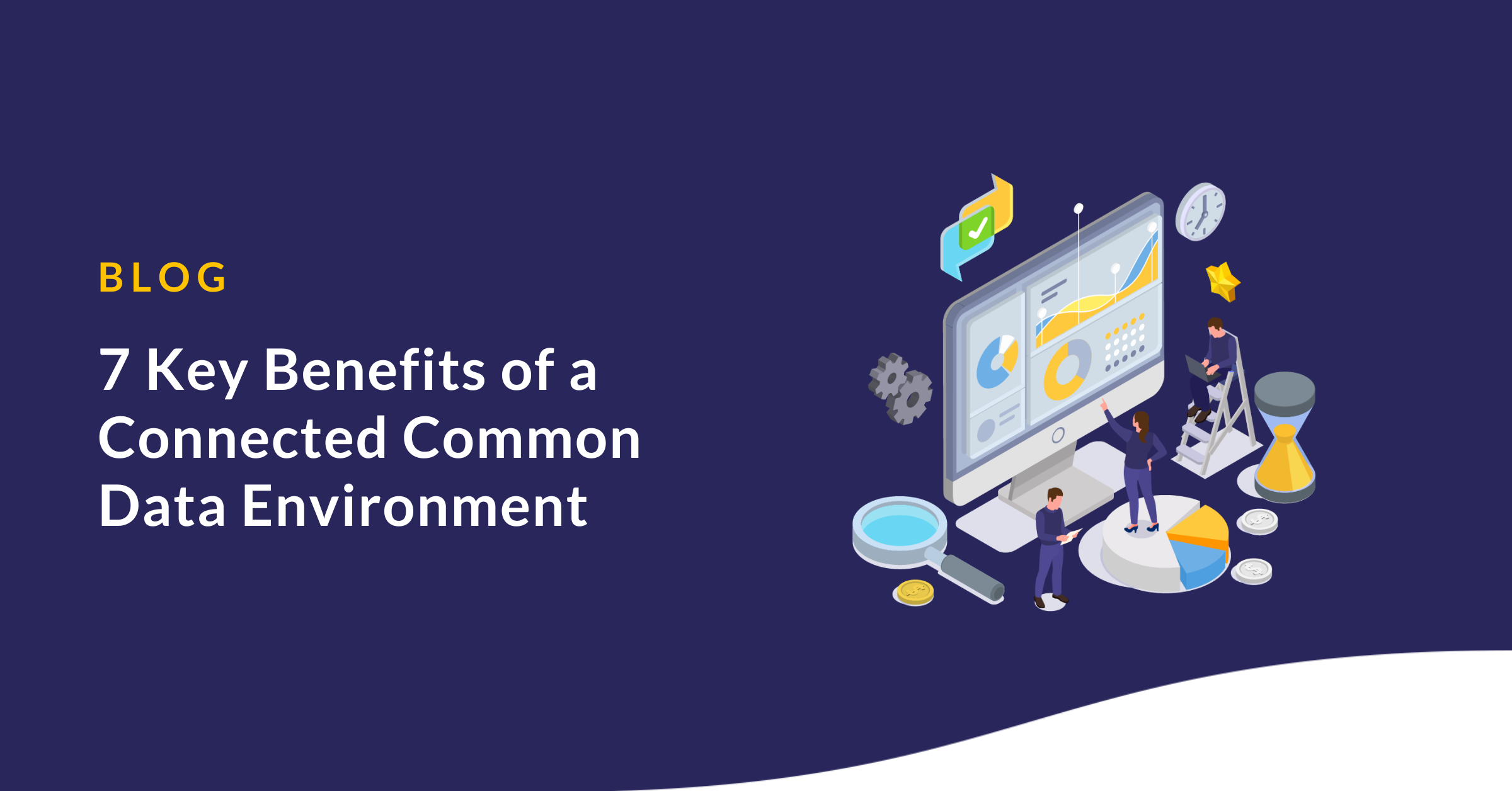7 Key Benefits of a Connected Common Data Environment

Most businesses in the AEC industry require a Common Data Environment. But, for businesses with various project teams collaborating across locations, one CDE may not be enough. Such big projects require more than one Common Data Environment and a set of solutions to address all the requirements of a construction project. However, using multiple platforms comes with its own challenges—primarily, the lack of data flow between these platforms.
In a Construction and Technology Survey conducted by KHL, nearly 50% of construction firms identified integration challenges as a top barrier to tech adoption. (1)
Seamless data flow is crucial when building an ecosystem of software platforms that work together. For the Engineering and Construction (AEC) industry, this means choosing CDEs that allow for automated, secure, and flexible data exchange between platforms.
With Common Data Environment 2.0 (CDE 2.0), this level of interoperability becomes possible. Let’s explore how CDE 2.0 enhances information and asset management across all project stages.
What is Common Data Environment 2.0 (CDE 2.0)?
CDE 2.0 is an advanced approach to information management in AEC, focusing on seamless data exchange. It represents an interconnected ecosystem of CDEs and software platforms that facilitate controlled data transfer across projects and organisations.
At its core, CDE 2.0 leverages technologies such as Data Flows to enable communication between multiple CDEs, eliminating data silos. This evolution allows businesses to select best-in-class solutions without concerns about compatibility issues.
Additionally, CDE 2.0 aligns with industry security standards and ISO requirements, ensuring structured and compliant data transfers. By streamlining collaboration and enhancing flexibility, CDE 2.0 enables businesses to move beyond a monolithic, single-software approach.
The Goals of CDE 2.0
CDE 2.0 is designed to address the limitations of traditional CDEs. Key objectives include:
- Eliminating Data Silos: Ensuring seamless, secure, and structured data exchange between platforms.
- Enhancing Flexibility: Enabling businesses to choose software solutions based on functionality rather than compatibility constraints.
- Ensuring Compliance: Supporting ISO 19650 workflows to ensure that data transfers follow formal approval processes before being published in another CDE.
- Future-Proofing: Avoiding vendor lock-in and enabling adaptability to new software solutions over long project timelines.
Benefits of Common Data Environment 2.0
1. Automated Data Exchange Between Platforms
Manually transferring data across platforms is error-prone and time-consuming. CDE 2.0 integrates open CDEs through APIs with automated workflows, allowing for scheduled updates between platforms. This reduces errors, improves efficiency, and saves significant time and costs.
2. Elimination of Data Silos
Traditional CDEs operate in isolation, restricting data exchange. CDE 2.0 facilitates open data sharing, ensuring information is accessible across platforms. This enables secure and automated data flow, improving project-wide collaboration and accessibility.
3. Enhanced Resource Utilisation
Manually managing data is a significant burden for AEC professionals. CDE 2.0 reduces this workload through automated data transfers, allowing teams to focus on higher-value tasks. This improves job satisfaction and increases operational efficiency.
4. Improved Collaboration
CDE 2.0 enhances collaboration by enabling real-time information sharing across teams, regardless of location. Teams always have access to the latest data, reducing delays and enhancing project efficiency.
5. Reduced Time and Cost with Improved Scalability
With multiple teams using different technologies, interoperability is critical. CDE 2.0 allows businesses to build scalable, connected systems that evolve with changing project needs, eliminating bottlenecks and reducing project costs.
6. Strengthened Security
With large volumes of data flowing between platforms, security is a priority. CDE 2.0 integrates access controls, version history, and compliance with ISO 19650 to ensure secure data management and controlled information exchange.
7. Customised Ecosystem of Solutions
Most current CDEs are closed, limiting integrations to their own suite of tools. This restricts businesses from adopting newer, more effective software solutions over time.
In contrast, CDE 2.0 embraces open standards and interoperability, allowing organisations to use the best authoring tools and CDEs available. For long-term projects, this adaptability ensures businesses can integrate future technologies without restrictions.
12d Synergy’s CDE 2.0 Solution
12d Synergy champions a data-agnostic approach, enabling businesses to build their own interconnected CDE ecosystem. With APIs, integrations, connectors, and plugins, 12d Synergy’s CDE Connect engine streamlines file transfers, metadata management, and workflow automation.
By incorporating ISO 19650 compliance, 12d Synergy’s CDE 2.0 solution ensures structured approval processes for data exchanges, strengthening security and governance.
Data fragmentation is a major challenge in AEC. Businesses must adopt solutions that enhance interoperability and efficiency. CDE 2.0 empowers organisations to customise their software ecosystem, improve collaboration, and future-proof their projects.
With solutions like 12d Synergy, businesses can implement CDE 2.0 with confidence, maximising flexibility, security, and productivity for years to come.
Source: 1
12d Synergy Academy
